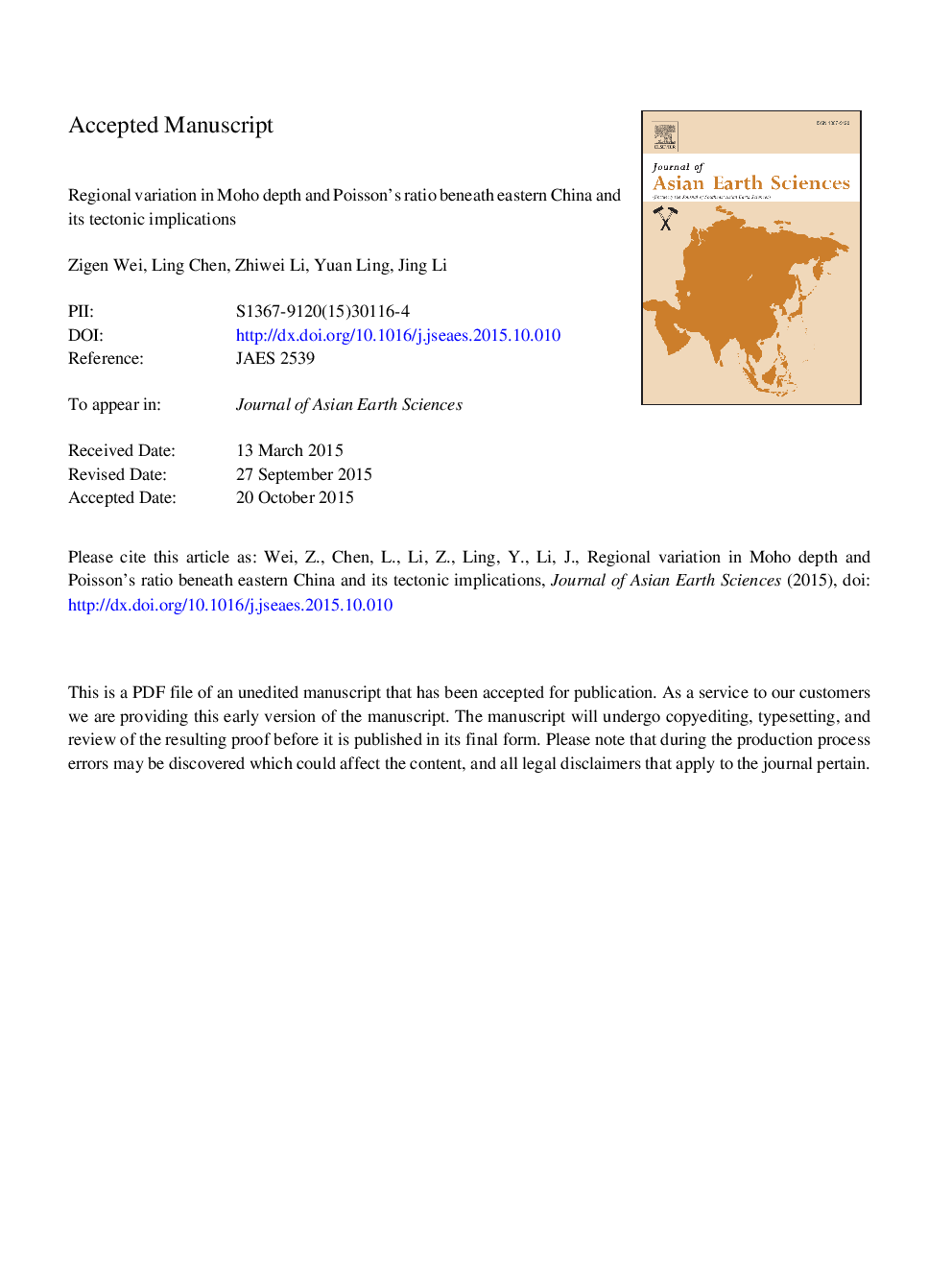| Article ID | Journal | Published Year | Pages | File Type |
|---|---|---|---|---|
| 6443999 | Journal of Asian Earth Sciences | 2016 | 54 Pages |
Abstract
Eastern China comprises a complex amalgamation of geotectonic blocks of different ages and undergone significant modification of lithosphere during the Meso-Cenozoic time. To better characterize its deep structure, we conducted H-κ stacking of receiver functions using teleseismic data collected from 1143 broadband stations and produced a unified and detailed map of Moho depth and average Poisson's ratio (Ï) of eastern China. A coexistence of modified and preserved crust with generally in Airy-type isostatic equilibrium was revealed in eastern China, which correlates well with regional geological and tectonic features. Crust is obviously thicker to the west of the North-South Gravity Lineament but exhibits complex variations in Ï with an overall felsic to intermediate bulk crustal composition. Moho depth and Ï values show striking differences as compared to the surrounding areas in the rifts and tectonic boundary zones, where earthquakes usually occur. Systematic comparison of Moho depth and Ï values demonstrated that there are both similarities and differences in the crustal structure among the Northeast China, North China Craton, South China, and the Qinling-Dabie Orogen as well as different areas within these blocks, which may result from their different evolutionary histories and strong tectonic-magma events since the Mesozoic. Using new data from dense temporary arrays, we observed a change of Moho depth by â¼3 km and of Ï by â¼0.04 beneath the Tanlu Fault Zone and an alteration of Moho depth by â¼5 km and of Ï by â¼0.05 beneath the Xuefeng Mountains. In addition, striking E-W difference in crustal structure occur across the Xuefeng Mountains: to the east, the Moho depth is overall <35 km and Ï has values of <0.26; to the west, the Moho depth is generally >40 km and Ï shows complex and large-range variation with values between 0.22 and 0.32. These, together with waveform inversion of receiver functions and SKS shear-wave splitting measurements, suggest that the Tanlu Fault Zone is at least a crustal-scale fault and the Xuefeng Mountains may be a deep tectonic boundary between the eastern Yangtze Craton and western Cathaysia Block.
Related Topics
Physical Sciences and Engineering
Earth and Planetary Sciences
Geology
Authors
Zigen Wei, Ling Chen, Zhiwei Li, Yuan Ling, Jing Li,
